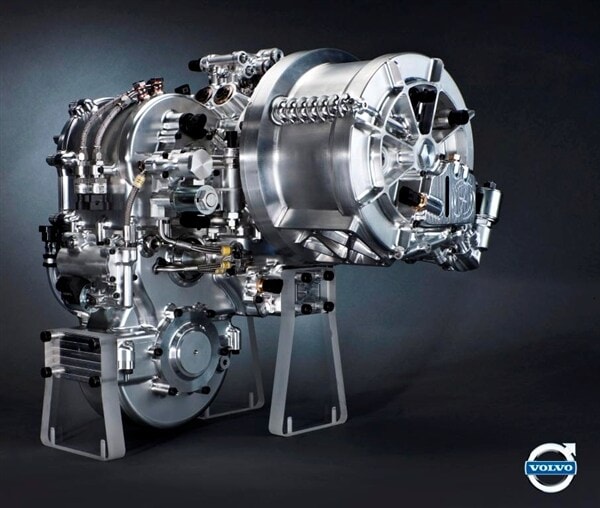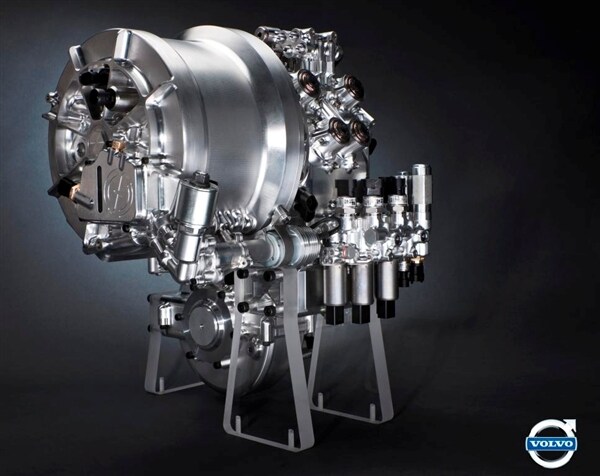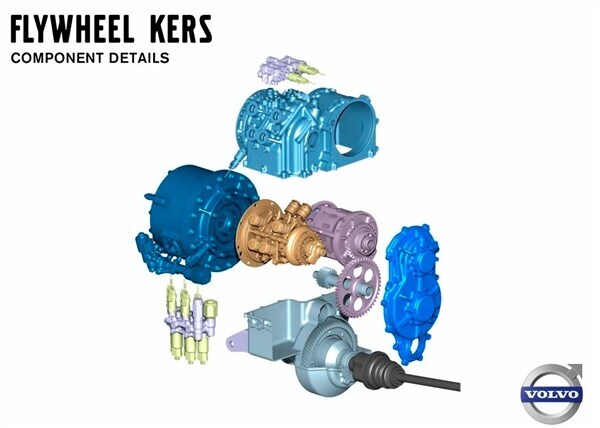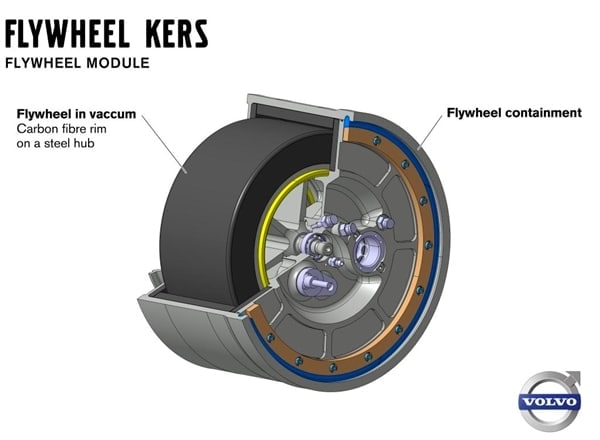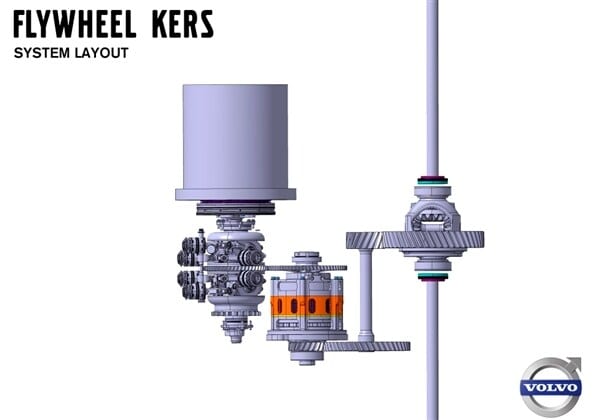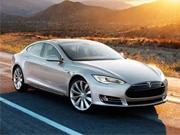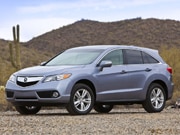After a year spent conducting real-world evaluations of its experimental kinetic flywheel technology system, Volvo is reporting that this compact, lightweight power-booster package can dramatically improve performance while significantly reducing fuel use. According to Derek Crabb, Vice President Powertrain Engineering at Volvo Car Group, its Flywheel KERS (Kinetic Energy Recovery System) offers a cost effective way to add up to 80 additional horsepower for limited periods of time and make a car fitted with a turbocharged 4-cylinder accelerate as if had a turbo 6-cylinder engine, while offering up to 25 percent better relative mpg stats.
Also: 10 Best Green Cars for 2013
Mounted at the rear of the vehicle — in this case a Volvo S60 Sedan — the automaker’s F1-style Flywheel KERS hardware is based around a carbon fiber flywheel that weighs just over 13 pounds and rotates at up to 60,000 rpm in a vacuum-sealed case that helps minimize parasitic friction losses. This module is attached to a specially designed CVT automatic transmission/differential unit that ships power to the aft wheels. Whenever braking commences, the system controller immediately shuts the engine off and brings the flywheel up to speed via regenerative braking. Stored energy from the Flywheel KERS then can be used as the primary propulsive force either when starting from a stop or to keep the car moving along once it reaches a cruising speed.
Also: Your 12 midsize sedan choices
According to Crabb, Volvo’s test data indicates that it would be possible to operate a Flywheel KERS-equipped vehicle with the engine off nearly 50 percent of the time when completing the official New European Driving Cycle regimen. In addition to helping generate comparative fuel savings of up to 25 percent, this fully energized Flywheel KERS setup working with the gasoline engine can slice seconds off of a car’s 0-62 mph time, a sprint that requires just 5.5 ticks in the S60 test vehicle.
"We are the first manufacturer that has applied flywheel technology to the rear axle of a car fitted with a combustion engine driving the front wheels," noted Crabb. "The next step after completing these successful tests is to evaluate how the technology can be implemented in our upcoming car models."
While indicating that Flywheel KERS would be a relatively low-cost/high-value addition to the mix, Volvo has yet to indicate exactly what kind of premium this no-battery hybrid system might actually command when produced in volume numbers.
The 2014 Chevy Cruze 2.0TD rated a class-best 46 mpg on the highway
Ford and GM are teaming on new 9- and 10-speed automatics
Toyota’s cumulative global hybrid sales have now topped 5 million
Popular at KBB.com
First Pics: All-new Cars for 2014
The 40 mpg Cars of 2013
5-Year Cost to Own Awards 2013
